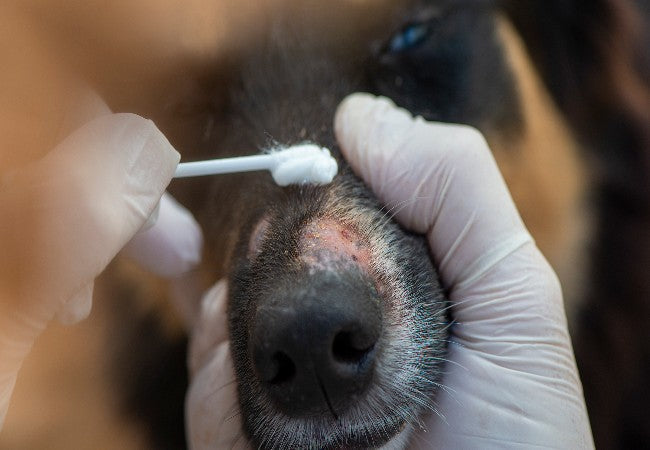Mycoplasmosis in Dogs: Vet-Approved Causes, Symptoms & Treatments (2025 Guide) 🐶💊

In this article
Mycoplasmosis in Dogs: Vet-Approved Causes, Symptoms & Treatments (2025 Guide) 🐶💊
By Dr. Duncan Houston BVSc
As a veterinarian, I often encounter cases of mycoplasmosis in dogs, a bacterial infection that can affect various body systems. Understanding this condition is crucial for early detection and effective treatment. This comprehensive guide aims to educate pet owners on the causes, symptoms, and treatment options for mycoplasmosis in dogs.
🧬 What Is Mycoplasmosis?
Mycoplasmosis is an infection caused by Mycoplasma bacteria, which are among the smallest free-living organisms. Unlike many bacteria, they lack a cell wall, making them unique and sometimes challenging to treat. These bacteria can inhabit various parts of a dog's body, including the respiratory, urinary, and reproductive systems, and can cause disease when the immune system is compromised.
🐞 Causes of Mycoplasmosis
Mycoplasma bacteria are commonly found in the environment and can be part of the normal flora in dogs. However, certain factors can predispose dogs to infection:
- 🧬 Weakened immune system: Dogs with compromised immunity are more susceptible.
- 🐾 Close contact with infected animals: Especially in kennels or shelters.
- 🧼 Poor hygiene: Unsanitary living conditions can increase risk.
- 🦠 Concurrent infections: Other infections can facilitate Mycoplasma overgrowth.
Species such as Mycoplasma canis, M. spumans, and M. maculosum are commonly implicated in canine infections.
⚠️ Symptoms of Mycoplasmosis
Symptoms vary depending on the affected system:
Respiratory System:
- 🤧 Sneezing
- 😮💨 Coughing
- 🌡️ Fever
- 😴 Lethargy
Urinary and Reproductive Systems:
- 💧 Frequent urination or straining
- 🩸 Blood in urine
- 🐶 Infertility or reproductive issues
- 🤰 Miscarriages or stillbirths
Other Symptoms:
- 🦴 Joint pain or arthritis
- 👁️ Eye discharge or conjunctivitis
- 🍽️ Loss of appetite
- 📉 Weight loss
It's important to note that some dogs may carry the bacteria without showing symptoms, but can still transmit the infection to others.
🩺 Diagnosing Mycoplasmosis
Diagnosis involves a combination of clinical evaluation and diagnostic tests:
- 🔬 Physical examination: Assessing clinical signs and history.
- 🧪 Laboratory tests: Blood work, urinalysis, and cultures to detect the bacteria.
- 🖼️ Imaging: X-rays or ultrasounds to assess internal involvement.
- 🧫 PCR testing: Detects Mycoplasma DNA for accurate diagnosis.
Accurate diagnosis is essential for effective treatment planning.
💊 Treatment Options
Treatment strategies depend on the severity and location of the infection:
- 💊 Antibiotics: Doxycycline or enrofloxacin are commonly prescribed.
- 🛌 Supportive care: Ensuring hydration, nutrition, and rest.
- 🩺 Monitoring: Regular follow-ups to assess response to treatment.
Early and appropriate treatment improves the prognosis significantly.
🛡️ Preventing Mycoplasmosis
Preventive measures include:
- 🧼 Maintain hygiene: Regular cleaning of living areas and belongings.
- 🐕 Limit exposure: Avoid contact with infected animals.
- 🩺 Regular veterinary check-ups: Early detection and management of health issues.
- 🥗 Balanced diet: Supports a healthy immune system.
Implementing these measures can reduce the risk of infection.
📱 Support and Resources
If you suspect your dog has mycoplasmosis, consult your veterinarian promptly. For additional support:
- Ask A Vet: Access professional veterinary advice through the Ask A Vet platform.
- Download the Ask A Vet App: For quick access to veterinary support, download the Ask A Vet app.
Early diagnosis and appropriate treatment can significantly improve your dog's quality of life.
🐾 For more expert advice and pet care tips, visit AskAVet.com.






